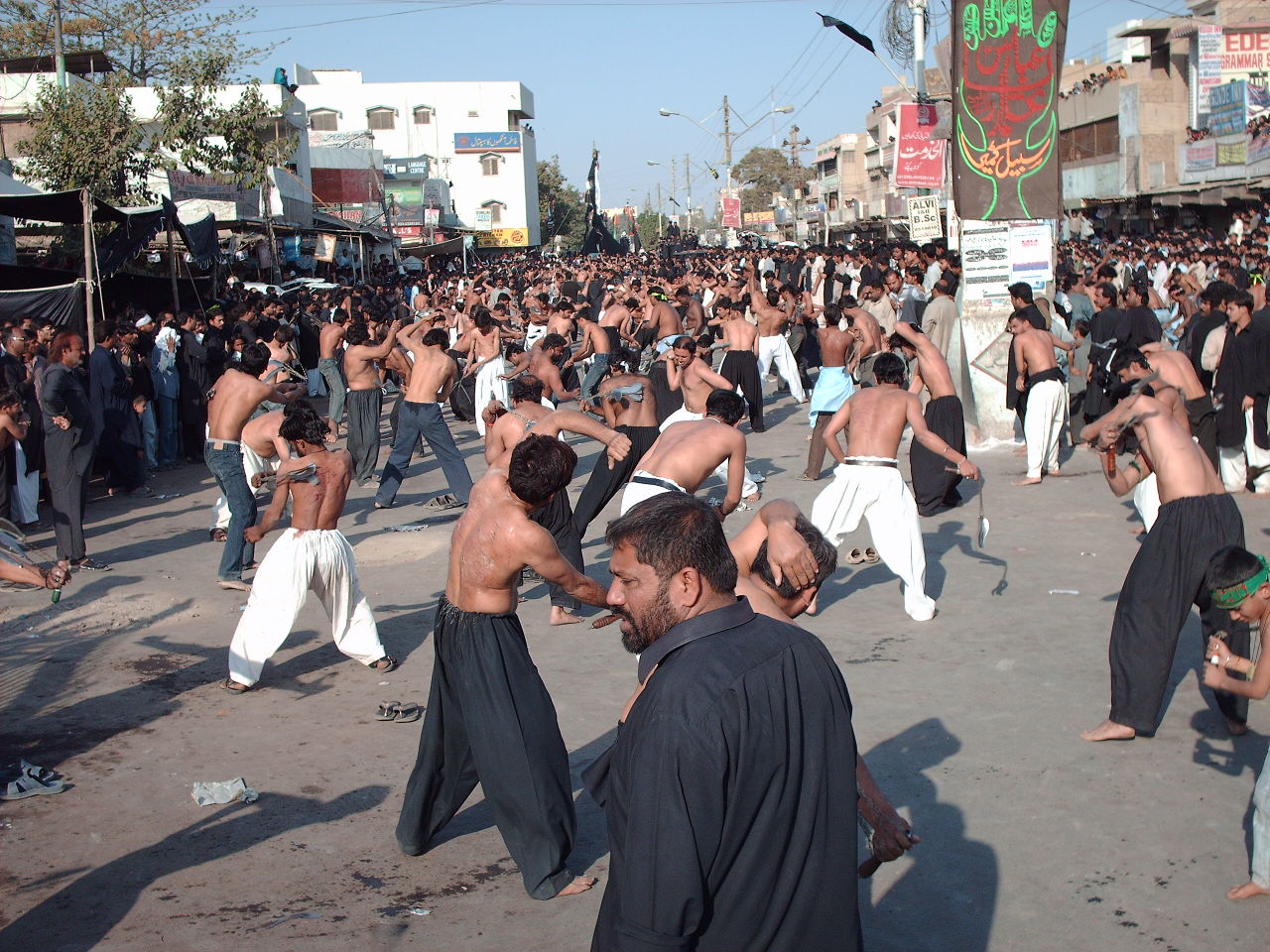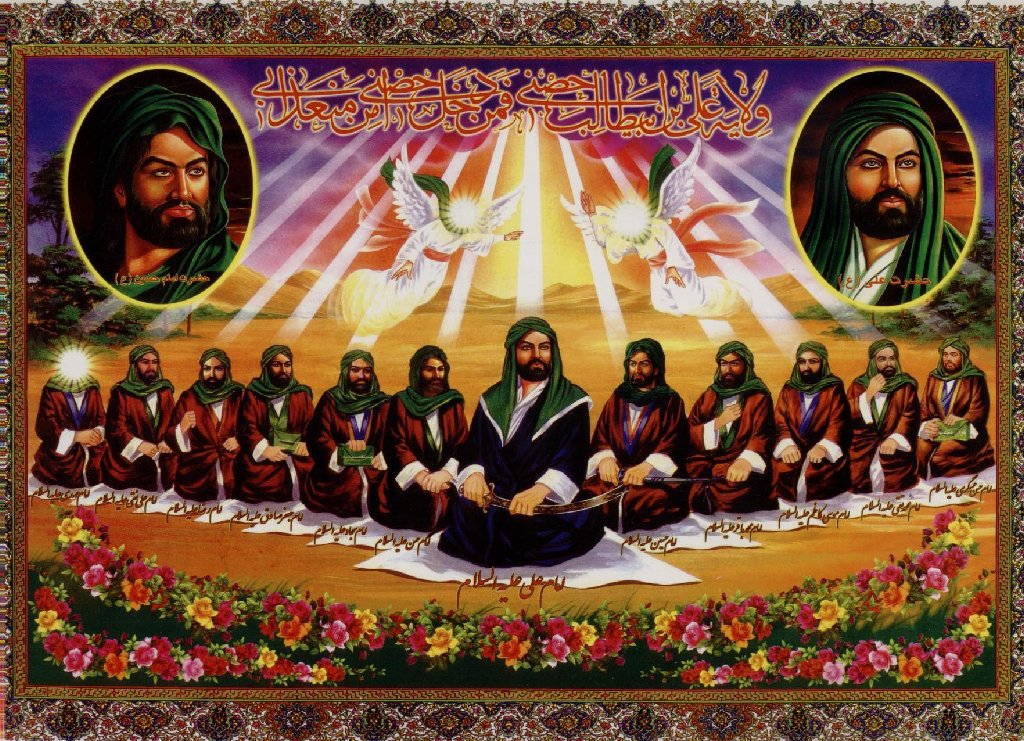5. Shi'a Islam
On the death of Prophet Muhammad in 632, with the lack of clear rules for the appointment of his successor (caliph), the Muslim community needed to "freely" decide who would be his successor. This choice was the prelude to a Fitna, a major dissension between Muslims with fratricidal wars from 657 to 680. This Fitna was at the origin of Shiism, the oldest religious sect of Islam. In its many forms, Shiism now represents 10 to 15% of Muslims worldwide. The most important trend of Shiism is the Twelver Imamite Shiism.
Sunnis and Shi'a worldwide

Green: Sunnis, Red: Shi'a, Bleu : Ibadis
Wikimedia Commons. Usable under the conditions of the GNU Free Documentation License
Licensed under Creative Commons Attribution-Share Alike 3.0 Unportedn
Image under URL: http://commons.wikimedia.org/wiki/File:Islam_by_country.svg (05/01/2015)
Approximately 11% to 15% of Muslims are Shi'a. In Iran, which has the largest Shi'a community, Shi'a Islam became the state religion in the early 16th century. In Iraq, Shi'a are the majority of the population (55%) as well as in Bahrain (50-60%) and in Lebanon. Shi’a are significant minorities in Turkey, in Azerbaijan, in the Arab Middle East, on the coast of East Africa, in India and in Pakistan. In the Arab Sunni States, Shi’a are often considered as "second class citizens". Their dual religious and Arabic identity has created tensions that are exacerbated by the geopolitical situation. Since the Islamic Revolution in Iran, the “Shi’a revival” has strengthened the coalition of Sunni countries beyond the Arab world against the "Shi’a crescent".
Procession of the 'Āshūrā' in Pakistan

Wikimedia Commons. Usable under the conditions of the GNU Free Documentation License
Licensed under Creative Commons Attribution-Share Alike 3.0 Unportedn
Image under URL: http://commons.wikimedia.org/wiki/File:PICT0871.jpg (05/01/2015)
The celebration of the 'Āshūrā' (10th day of the month of Muharram in the Islamic calendar) is a memorial rite for the martyrdom of Huseyn, the son of ‘Alī and Fātima and the grand-son of Muhammad. Huseyn was killed during a battle with the Umeyyades in Karbalā, near the Euphrates. Like other leaders of Quraysh, he refused to take an oath of obedience to the second Umeyyade Yazīd in 680. He was struck by an arrow before being beheaded. The image was taken in eastern Karachi on the day of 'Āshūrā'. The crowd marches in a large avenue. As a sign of mourning, men wear black shirts while others flagellate themselves with chains or whips (or even knives for some of them).
A popular image of the Imāms of Twelver Shi'a

Wikimedia Commons. Usable under the conditions of the GNU Free Documentation License
Public domain
Image under URL: http://commons.wikimedia.org/wiki/File:The_Twelve_Imams.jpg (05/01/2015)
The choice of the first caliphs, successors of Muhammad, was contested by the Shī'a (the supporters) gathered around ‘Alī, son in law of the Prophet and belonging to the same clan. ‘Alī became the fourth caliph and was murdered in 661. Mu'āwiya, governor of Damascus, succeeded to ‘Alī and founded the Umeyyade dynasty. The historical Imāms are the descendants of ‘Alī and his sons Hasan and Huseyn. Shi'a has different trends according to the lineage and the number of the Imāms they recognize. On this popular image, they are twelve, hence the name of Twelver Shi'a. ‘Alī, the first Imām, stands at the centre in the foreground. Above him, in a medallion, are his sons, the elder Hasan and the younger Huseyn. The head of the twelfth Imām, born in 869, is hidden by a white circle. According to the Shi'a theology, he will return to earth to restore justice and peace. Each Imām is kneeling on a white prayer rug, the symbol of the purity of their heart. For Muslims, the Quran is the Word sent down from heaven. The two angels remind us from the divine origin of the revelation.
The mission of the "Supreme Guide" (faqih) according to Ayatollah Khomeini
The founder of the Islamic Republic differentiates two types of order in his treatise: the order according to Sharia and the government order. Orders according to Sharia [...] have been established by God. Examples are prayer, fasting and going to a pilgrimage. The Prophet didn’t make the decisions about this category of obligations. His function consisted in those orders to be executed. Thus, to pray is to obey God. Whereas the commandments of the Prophet are government orders: all what is about military matters, borders, taxes, etc. However, God commands obedience to the Prophet and to the twelve Imams. Furthermore, to justify the velāyat-e-faqīh [...], Ayatollah Khomeini asserted that power - governing the country and applying Sharia rules - was entrusted to a just and devout guardian. [...] This mission was given to him by God without any intermediary, and this will be this way until the return of the Twelfth Imam. Therefore, the existing guardianship law for the Prophet and for Imams remains valid for the faqîh. In this sense, in order to run the country according to God's will, the Islamic authority is the commander and must be obeyed by everyone including all other faqîhs.
Azadeh Kian-Thiébaut « Le statut de la charia en Iran :de l'islamisme au postislamisme », 2001. Trans. Marie Lebert. http://www.jurispolis.com/dt/mat/dt_ir_charia.htm
(05/01/2015)
.
Political Shiism emerged in 1979 on the international scene, when the Iranian Islamic Revolution overthrew the Shah of Iran. The Shiite political ideology was theorized under the concept of velāyat-e-faqīh (government of clerics). The supreme power was given a spiritual guide, the heir to the Imām. The first "Supreme Leader" was Ayatollah Khomeini (died in 1989), a scholar who was a legal theologian (faqīh). His theory of governance of clerics was not shared unanimously by all the main ayatollahs in Lebanon, in Irak and even in Iran.






